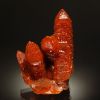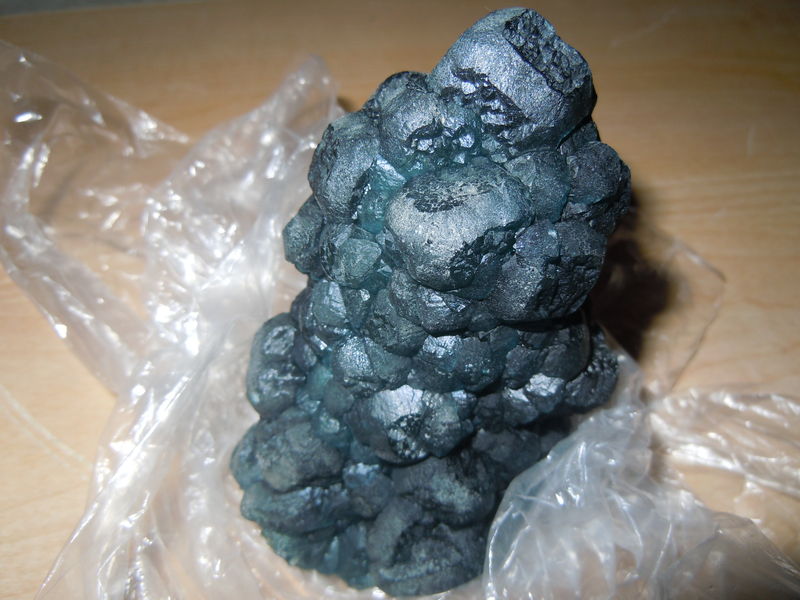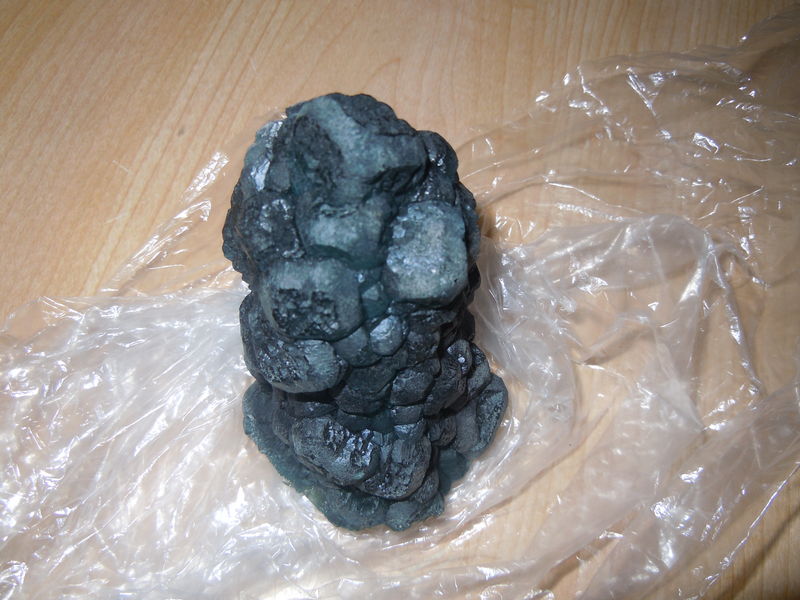| View previous topic :: View next topic |
| Author |
Message |
Casimir Sarisky
Joined: 14 Jun 2015
Posts: 56
Location: Maryland



|
 Posted: Jun 16, 2015 04:53 Post subject: How to identify bruising on specimens Posted: Jun 16, 2015 04:53 Post subject: How to identify bruising on specimens |
|
|
As I learn the various damages that occur on the majority of specimens collected, I have been better at identifying the these types of damages on specimens. However, I seem to have a bit of an issue on identifying bruising, especially on darker specimens such as the blue fluorite on quartz from inner mongolia (seems to be common with these types of specimens) or black specimens such as schorl.
Can anyone point out references to bruising on specimens such as these and others? I am a visual learner so I learn best from images. Unfortunately, I could not find any discussion about bruising on the forum search so I wanted to create this thread.
|
|
| Back to top |
|
 |
Michael Shaw
Site Admin

Joined: 30 Apr 2008
Posts: 2066
Location: Oklahoma



|
 Posted: Jun 16, 2015 08:15 Post subject: Re: How to identify bruising on specimens Posted: Jun 16, 2015 08:15 Post subject: Re: How to identify bruising on specimens |
|
|
| Casimir Sarisky wrote: | As I learn the various damages that occur on the majority of specimens collected, I have been better at identifying the these types of damages on specimens. However, I seem to have a bit of an issue on identifying bruising, especially on darker specimens such as the blue fluorite on quartz from inner mongolia (seems to be common with these types of specimens) or black specimens such as schorl.
Can anyone point out references to bruising on specimens such as these and others? I am a visual learner so I learn best from images. Unfortunately, I could not find any discussion about bruising on the forum search so I wanted to create this thread. |
Hi Casimir,
Detecting small areas of damage is sometimes difficult with the naked eye. I suggest you get a good loupe and it will serve you well.
As for damage on darker specimens, it tends to present with lighter colored areas. Focus your inspection on these areas to determine if there is bruising.
|
|
| Back to top |
|
 |
Casimir Sarisky
Joined: 14 Jun 2015
Posts: 56
Location: Maryland



|
 Posted: Jun 16, 2015 12:38 Post subject: Re: How to identify bruising on specimens Posted: Jun 16, 2015 12:38 Post subject: Re: How to identify bruising on specimens |
|
|
| crosstimber wrote: | | Casimir Sarisky wrote: | As I learn the various damages that occur on the majority of specimens collected, I have been better at identifying the these types of damages on specimens. However, I seem to have a bit of an issue on identifying bruising, especially on darker specimens such as the blue fluorite on quartz from inner mongolia (seems to be common with these types of specimens) or black specimens such as schorl.
Can anyone point out references to bruising on specimens such as these and others? I am a visual learner so I learn best from images. Unfortunately, I could not find any discussion about bruising on the forum search so I wanted to create this thread. |
Hi Casimir,
Detecting small areas of damage is sometimes difficult with the naked eye. I suggest you get a good loupe and it will serve you well.
As for damage on darker specimens, it tends to present with lighter colored areas. Focus your inspection on these areas to determine if there is bruising. |
Any specific brands I should look for loupes?
This specimen of blue fluorite on quartz has a light colored area on
| Description: |
|
| Viewed: |
11861 Time(s) |

|
| Description: |
|
| Viewed: |
11885 Time(s) |

|
|
|
| Back to top |
|
 |
Michael Shaw
Site Admin

Joined: 30 Apr 2008
Posts: 2066
Location: Oklahoma



|
 Posted: Jun 16, 2015 13:01 Post subject: Re: How to identify bruising on specimens Posted: Jun 16, 2015 13:01 Post subject: Re: How to identify bruising on specimens |
|
|
Hi Casimir,
That looks like a nice fluorite from the Huanggang Mines. I don't see any obvious areas of damage, although I suppose there could be some very small nicks that aren't visible in the photo.
As far as loupe brands, the 10x Hastings Triplet made by Bausch & Lomb has been around for ages and is a good quality loupe. You can probably find one for around $30 or so. Belomo also makes a good quality loupe for about the same price. There are probably other good brandsl, but I'm not familiar enough with them to recommend one. Just avoid the really cheap ones as they tend to have poorly ground lenses that will give you a distorted image.
|
|
| Back to top |
|
 |
Casimir Sarisky
Joined: 14 Jun 2015
Posts: 56
Location: Maryland



|
 Posted: Jun 16, 2015 13:25 Post subject: Re: How to identify bruising on specimens Posted: Jun 16, 2015 13:25 Post subject: Re: How to identify bruising on specimens |
|
|
| crosstimber wrote: | Hi Casimir,
That looks like a nice fluorite from the Huanggang Mines. I don't see any obvious areas of damage, although I suppose there could be some very small nicks that aren't visible in the photo.
As far as loupe brands, the 10x Hastings Triplet made by Bausch & Lomb has been around for ages and is a good quality loupe. You can probably find one for around $30 or so. Belomo also makes a good quality loupe for about the same price. There are probably other good brandsl, but I'm not familiar enough with them to recommend one. Just avoid the really cheap ones as they tend to have poorly ground lenses that will give you a distorted image. |
So those light spot is not bruising, it is the just a lighter color area? The seller stated there was no damage but they are a few of these lighter spots on the specimen. I did not detect any nicks on it.
I will look around for these brand names. Thanks. :)
|
|
| Back to top |
|
 |
GneissWare

Joined: 07 Mar 2008
Posts: 1287
Location: California



|
 Posted: Jun 16, 2015 13:52 Post subject: Re: How to identify bruising on specimens Posted: Jun 16, 2015 13:52 Post subject: Re: How to identify bruising on specimens |
|
|
| I also don't see any obvious damage. Minerals are natural objects with localized heterogeneity, so variations in color are not necessarily evidence of damage. On these specimens, you pay more for those with more uniform, darker color, and with good aesthetics on the underlying quartz points.
|
|
| Back to top |
|
 |
vic rzonca

Joined: 18 Nov 2008
Posts: 820
Location: MA



|
 Posted: Jun 16, 2015 14:06 Post subject: Re: How to identify bruising on specimens Posted: Jun 16, 2015 14:06 Post subject: Re: How to identify bruising on specimens |
|
|
| Kasimir, can you tell if the specimen has been oiled? The easiest way to hide a bruise is light oiling at the site of the injury, it makes any crushing damage fade. I don't see any obvious damage in your image.
|
|
| Back to top |
|
 |
Casimir Sarisky
Joined: 14 Jun 2015
Posts: 56
Location: Maryland



|
 Posted: Jun 16, 2015 15:24 Post subject: Re: How to identify bruising on specimens Posted: Jun 16, 2015 15:24 Post subject: Re: How to identify bruising on specimens |
|
|
| GneissWare wrote: | | I also don't see any obvious damage. Minerals are natural objects with localized heterogeneity, so variations in color are not necessarily evidence of damage. On these specimens, you pay more for those with more uniform, darker color, and with good aesthetics on the underlying quartz points. |
Gotcha. I knew there were variations in color for most specimens, but these lighter spots seemed suspicious to me.
|
|
| Back to top |
|
 |
Casimir Sarisky
Joined: 14 Jun 2015
Posts: 56
Location: Maryland



|
 Posted: Jun 16, 2015 15:26 Post subject: Re: How to identify bruising on specimens Posted: Jun 16, 2015 15:26 Post subject: Re: How to identify bruising on specimens |
|
|
| vic rzonca wrote: | | Kasimir, can you tell if the specimen has been oiled? The easiest way to hide a bruise is light oiling at the site of the injury, it makes any crushing damage fade. I don't see any obvious damage in your image. |
The specimen is not shiny or feel like it has been coated with any oils/liquids. The crystals feel dry to me and not very smooth. So I assume that means it has not been oiled?
|
|
| Back to top |
|
 |
GneissWare

Joined: 07 Mar 2008
Posts: 1287
Location: California



|
 Posted: Jun 16, 2015 15:54 Post subject: Re: How to identify bruising on specimens Posted: Jun 16, 2015 15:54 Post subject: Re: How to identify bruising on specimens |
|
|
Unfortunately, there are many ways of improving luster and hiding dings that do not involve oils, and are virtually undetectable. So, any specimens which show the presence of oiling means the guy prepping them doesn't know what he/she is doing.
You can bet that most high end specimens have had some work done to them, such as vacuum impregnation. Also, lots of middle end ones.
|
|
| Back to top |
|
 |
|


